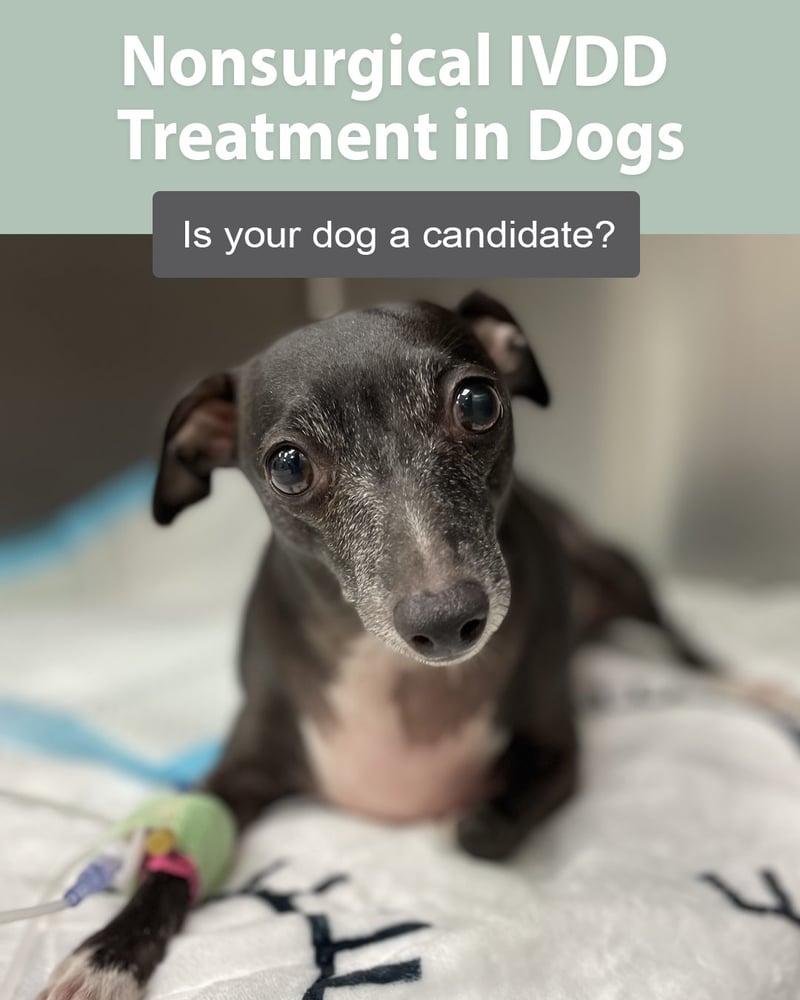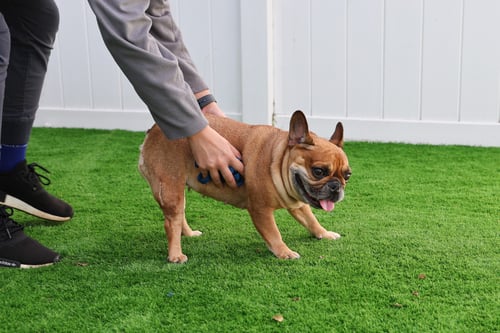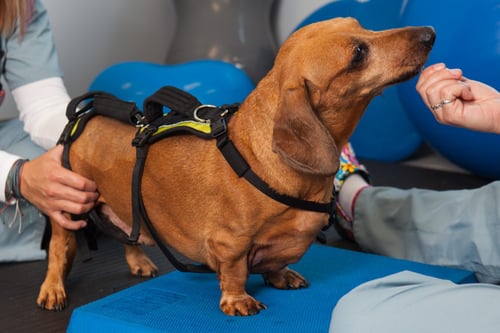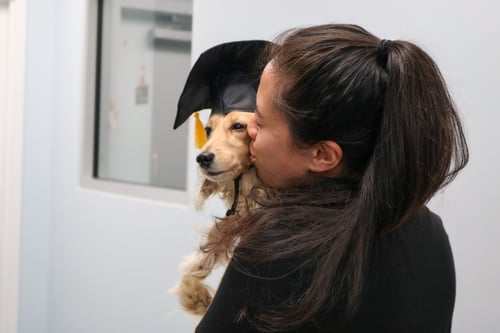Nonsurgical IVDD Treatment in Dogs: Is Your Dog a Candidate?
Decisions about IVDD treatment in dogs are made based on the severity and the duration of clinical signs. In some cases, IVDD can be managed nonsurgically. However, without timely and appropriate treatment, IVDD can cause irreversible damage. If your dog is showing signs of spinal pain or limited mobility, it is important to consult a veterinary neurologist immediately.

What are Signs Your Dog Needs IVDD Treatment?
Intervertebral disc disease (IVDD) is the most common cause of neck and back pain in dogs. The condition occurs when the intervertebral discs that provide the spine with flexibility and protection against impact dry out and become brittle, leading to rupture. These ruptured discs are commonly referred to as slipped or herniated discs and may cause pain, limited mobility, or even paralysis.
Symptoms depend on where the affected disc is located. IVDD can develop anywhere from the neck to the lower back, but slipped discs usually occur mid-back. These are painful and impact a dog’s mobility. Neck herniations, on the other hand, are less common, but tend to cause more pain with less loss of function.
Signs your dog may need IVDD treatment include:
- Pain: holding the head low, arching the back, holding the ears back, panting excessively, not wanting to move, muscle spasms, shivering, or crying
- Limited Mobility: wobbling, incoordination, weakness, or paw knuckling when walking
- Paralysis: dragging limbs, unable to stand, unable to walk or use limbs, incontinent, or unable to feel toes

Since other neurological disorders can look like a slipped disc, only a veterinary neurologist will be able to evaluate your dog thoroughly enough to determine the source of clinical signs. MRI is the best way to analyze the spinal cord, rule out other possibilities, and accurately diagnose IVDD.
Is There a Nonsurgical IVDD Treatment in Dogs?
IVDD treatment in dogs varies from medical management to surgical intervention. Dogs with more severe neurological signs or pain that is unresponsive to medical treatment are best suited for surgery. However, if your dog is a first-time sufferer with mild symptoms, IVDD may be nonsurgically managed with a combination of rest, pain medications, anti-inflammatories, and muscle relaxants. This is also an option for patients that cannot undergo MRI due to health concerns, financial reasons, or owner preference. Medications will generally follow a tapering schedule over a few weeks, while rest will continue for several more weeks, depending on clinical signs.
What Does Rest Mean During Nonsurgical IVDD Treatment in Dogs?
The most important component to nonsurgical IVDD treatment in dogs is limiting activity. Rest gives cartilage a chance to scar over and heal so that it doesn’t get worse and, hopefully, gets better over time. A crate is typically necessary to achieve this. We do not recommend the use of a back brace. There is no reason or evidence that it would be helpful, and it may even be harmful. Your dog should remain crated at all times, only being carried or taken out with a sling or short leash to urinate, defecate, or for physical therapy when appropriate.
What Are Best Practices for Crate Rest?
- Crate Type: A metal crate with a top is recommended to allow your dog to see out and you to see in, while preventing your dog from tearing it, knocking it over, or climbing/jumping out.
- Crate Size: The appropriate crate size is 2-3 times the size of your dog, so that your dog can stand up, turn around, and move away from an accident; but can’t run, jump, or stand on hind legs.
- Bedding: We recommend a foam mattress with a plastic cover for easy cleaning. You can use towels or blankets over this. Bedding should be soft, clean, and dry at all times.
- Location: Choose a location for the crate that best allows your dog to stay calm. Sometimes having multiple crates throughout the house is helpful.
- Feeding: Your dog will be eating and drinking in the crate. Raised or attachable crate bowls can be helpful. Because your dog will be resting, they probably will not eat as much as they normally do.
- Accepting the Crate: Crates are boring. While we want your dog to rest, sometimes a favorite toy can help them relax. Use your judgment. If the toy causes too much excitement, remove it. Your veterinary neurologist may prescribe additional medication if your dog is too anxious during confinement.

What is the Prognosis for Nonsurgical IVDD Treatment in Dogs?
The prognosis for nonsurgical IVDD treatment in dogs depends on the degree and duration of neurological symptoms. Dogs with mild neurological signs that can still walk can have a 60-70% chance of functional recovery. Dogs that are unable to walk, but can still move their legs, have about a 50-60% chance. For paralyzed dogs, the prognosis is guarded, with only around 50% of dogs recovering the ability to walk with fecal and urinary continence. Alternatively, all of these same dogs have about a 95% chance of making a full recovery with surgery.
So while nonsurgical IVDD treatment in dogs can be successful, recovery time is longer, completeness of recovery is less, and reoccurrence of clinical signs is higher than with surgery. It will be obvious whether or not medical management is working within the first week of treatment. If your dog is still having episodes of pain, symptoms aren’t improving, or symptoms are getting worse, it’s time to talk about getting an MRI.
Southeast Veterinary Neurology is the Expert on IVDD Treatment in Dogs
The board-certified veterinary neurologists at Southeast Veterinary Neurology (SEVN) are experts in medical and surgical diseases of the spine, including IVDD treatment in dogs. Request a consultation at any of our Florida locations in Miami, Boynton Beach, and Jupiter or our Virginia Beach, VA location!
